
Georges Bizet, registered at birth as Alexandre César Léopold Bizet, was a French composer of the Romantic era. Best known for his operas in a career cut short by his early death, Bizet achieved few successes before his final work, Carmen, which has become one of the most popular and frequently performed works in the entire opera repertoire.
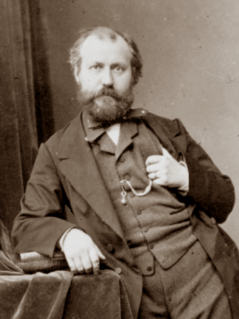
Charles-François Gounod, usually known as Charles Gounod, was a French composer. He wrote twelve operas, of which the most popular has always been Faust (1859); his Roméo et Juliette (1867) also remains in the international repertory. He composed a large amount of church music, many songs, and popular short pieces including his Ave Maria, and Funeral March of a Marionette.

Alfred Louis Charles de Musset-Pathay was a French dramatist, poet, and novelist. Along with his poetry, he is known for writing the autobiographical novel La Confession d'un enfant du siècle.
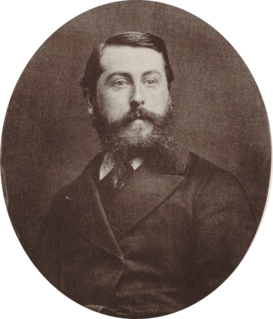
Clément Philibert Léo Delibes was a French composer, best known for his ballets and operas. His works include the ballets Coppélia (1870) and Sylvia (1876) and the opera Lakmé (1883).

Jules Émile Frédéric Massenet was a French composer of the Romantic era best known for his operas, of which he wrote more than thirty. The two most frequently staged are Manon (1884) and Werther (1892). He also composed oratorios, ballets, orchestral works, incidental music, piano pieces, songs and other music.

Charles Louis Ambroise Thomas was a French composer and teacher, best known for his operas Mignon (1866) and Hamlet (1868).
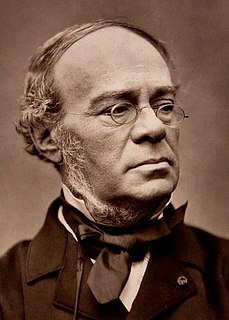
Jacques-François-Fromental-Élie Halévy, usually known as Fromental Halévy, was a French composer. He is known today largely for his opera La Juive.

Alexandre Charles Lecocq was a French composer, known for his opérettes and opéras comiques. He became the most prominent successor to Jacques Offenbach in this sphere, and enjoyed considerable success in the 1870s and early 1880s, before the changing musical fashions of the late 19th century made his style of composition less popular. His few serious works include the opera Plutus (1886), which was not a success, and the ballet Le cygne (1899). His only piece to survive in the regular modern operatic repertory is his 1872 opéra comique La fille de Madame Angot. Others of his more than forty stage works receive occasional revivals.

Pierre-Alexandre Monsigny was a French composer and a member of the French Académie des Beaux-Arts (1813).
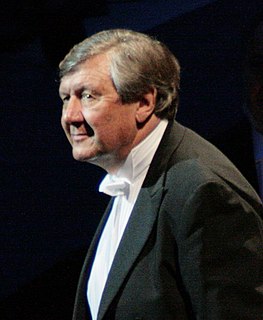
Michel Plasson is a French conductor.

Mireille is an 1864 opera in five acts by Charles Gounod to a French libretto by Michel Carré after Frédéric Mistral's poem Mirèio. The vocal score is dedicated to George V of Hanover.

French opera is one of Europe's most important operatic traditions, containing works by composers of the stature of Rameau, Berlioz, Gounod, Bizet, Massenet, Debussy, Ravel, Poulenc and Messiaen. Many foreign-born composers have played a part in the French tradition as well, including Lully, Gluck, Salieri, Cherubini, Spontini, Meyerbeer, Rossini, Donizetti, Verdi and Offenbach.

Sapho is a 3-act opera by Charles Gounod to a libretto by Émile Augier which was premiered by the Paris Opera at the Salle Le Peletier on 16 April 1851. It was presented only 9 times in its initial production, but was a succès d'estime for the young composer, with the critics praising Act 3 in particular. It was later revived in 2-act (1858) and 4-act (1884) versions, achieving a total of 48 performances.
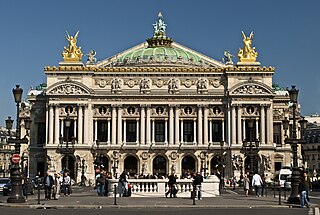
The Napoleon III style, also known as the Second Empire style, was a highly eclectic style of architecture and decorative arts, which used elements of many different historical styles, and also made innovative use of modern materials, such as iron frameworks and glass skylights. It flourished during the reign of Emperor Napoleon III in France (1852–1871) and had an important influence on architecture and decoration in the rest of Europe and the United States. Major examples of the style include the Opéra Garnier (1862–1871) in Paris by Charles Garnier, the Bibliothèque nationale de France, and the Church of Saint Augustine (1860–1871). The architectural style was closely connected with Haussmann's renovation of Paris carried out during the Second Empire; the new buildings, such as the Opéra, were intended as the focal points of the new boulevards.

The Théâtre Lyrique was one of four opera companies performing in Paris during the middle of the 19th century. The company was founded in 1847 as the Opéra-National by the French composer Adolphe Adam and renamed Théâtre Lyrique in 1852. It used four different theatres in succession, the Cirque Olympique, the Théâtre Historique, the Salle du Théâtre-Lyrique, and the Salle de l'Athénée, until it ceased operations in 1872.

Léon Carvalho was a French impresario and stage director.

The Symphony in C is an early work by the French composer Georges Bizet. According to Grove's Dictionary, the symphony "reveals an extraordinarily accomplished talent for a 17-year-old student, in melodic invention, thematic handling and orchestration." Bizet started work on the symphony on 29 October 1855, four days after turning 17, and finished it roughly a month later. It was written while he was studying at the Paris Conservatoire under the composer Charles Gounod, and was evidently a student assignment. Bizet showed no apparent interest in having it performed or published, and the piece was never played in his lifetime. He used certain material from the symphony in later works, however. There is no mention of the work in Bizet's letters, and it was unknown to his earlier biographers. His widow, Geneviève Halévy (1849–1926), gave the manuscript to Reynaldo Hahn, who passed it along with other papers to the archives of the conservatory library, where it was found in 1933 by Jean Chantavoine. Soon thereafter, Bizet's first British biographer Douglas Charles Parker (1885–1970) showed the manuscript to the conductor Felix Weingartner, who led the first performance in Basel, Switzerland, on 26 February 1935.

Ivan IV is an opera in five acts by Georges Bizet, with a libretto by Francois-Hippolyte Leroy and Henri Trianon.
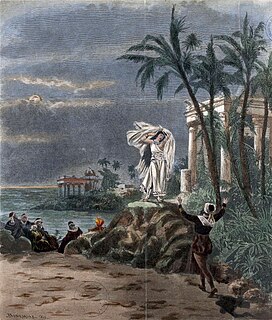
Les pêcheurs de perles is an opera in three acts by the French composer Georges Bizet, to a libretto by Eugène Cormon and Michel Carré. It was premiered on 30 September 1863 at the Théâtre Lyrique in Paris, and was given 18 performances in its initial run. Set in ancient times on the island of Ceylon, the opera tells the story of how two men's vow of eternal friendship is threatened by their love for the same woman, whose own dilemma is the conflict between secular love and her sacred oath as a priestess. The friendship duet "Au fond du temple saint", generally known as "The Pearl Fishers Duet", is one of the best-known in Western opera.

Louis-Victor-Nestor Roqueplan [also sometimes spelled Rocoplan] was a French writer, journalist, and theatre director.


















